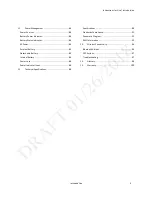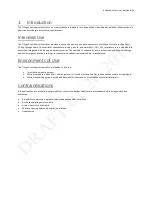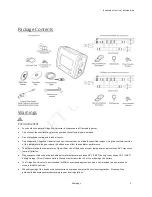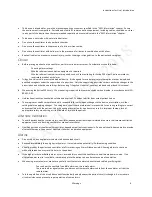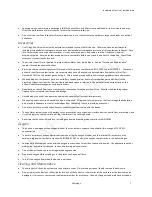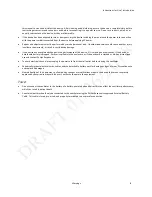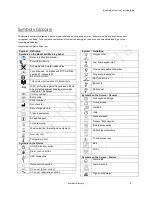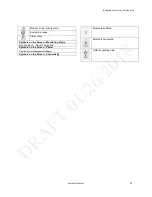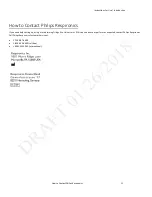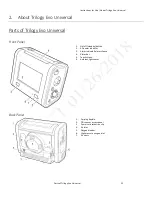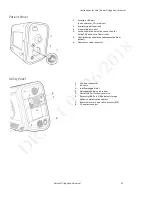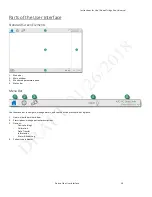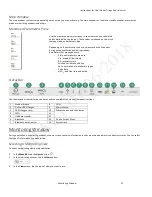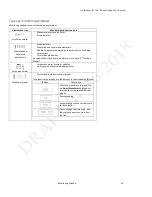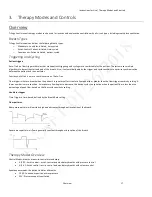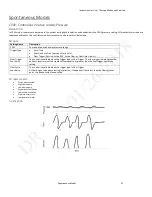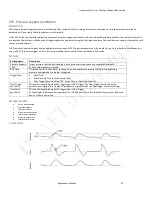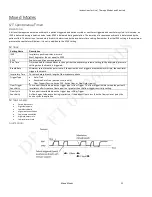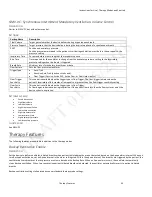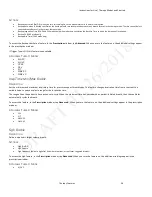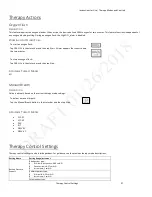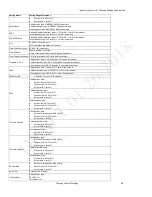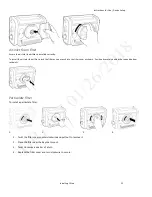
Instructions for Use | Therapy Modes and Controls
Overview
17
3.
Therapy Modes and Controls
Overview
Trilogy Evo Universal therapy modes can be used for invasive and noninvasive ventilation with all circuit types, including mouthpiece ventilation.
Breath Types
Trilogy Evo Universal can deliver the following breath types:
o
Mandatory
: Ventilator-initiated, time-cycled
o
Assist-Control
: Patient-initiated, time-cycled
o
Spontaneous:
Patient-initiated, patient-cycled
Triggering and Cycling
Patient triggers
Auto-Trak
is a flow trigger with rules that make patient-triggering and cycling more comfortable for the patient. The system uses multiple
algorithms to detect the start and end of the breath. Also, it automatically adjusts the trigger and cycle sensitivity to optimize synchronization
between the patient and the ventilator.
Sensitive Auto-Trak
is a more sensitive version of Auto-Trak
Flow trigger
initiates a breath when the patient’s inspiratory effort creates a flow equal to or greater than the flow trigger sensitivity setting. A
lower number is more sensitive. As inspiratory flow begins to decrease, the device cycles to expiration when the patient flow is less than the
percentage of peak flow, based on the flow-cycle sensitivity setting.
Ventilator trigger
Time Trigger
is time-based, defined by the Breath Rate setting.
Flow patterns
Ramp wave pattern: airflow starts high and decreases throughout inspiration of the breath.
Square wave pattern
:
airflow is generally constant throughout inspiration of the breath.
Therapy Modes Overview
Control Modes
: breaths are assist-control or mandatory.
•
A/C-PC: Assist control – assist-control and mandatory breaths with pressure control
•
A/C-VC: Assist control – assist control and mandatory breaths with volume control
Spontaneous modes
: the patient initiates all breaths.
•
CPAP: Continuous positive airway pressure
•
PSV: Pressure support ventilation

